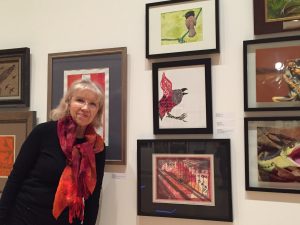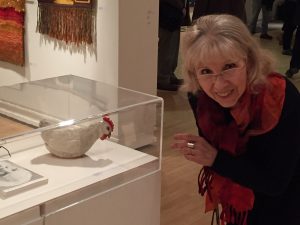Many people transitioning away from a meat-based diet opt for an ovo-vegetarian diet. In this post I explore Which goes first, the chicken (meat) or the egg?
Based on genomic studies, scientists can now conclude that chickens (Gallus gallus domesticus) became domesticated from wild junglefowl in Southeast Asia nearly 10,000 years ago.[1] Today chickens are an important food source on all continents and currently provide over 30% of global animal protein. According to the UN Food and Agriculture Organization (FAO) the use of chicken as a source of protein continues to grow rapidly due to its social acceptability, high feed-to-food conversion efficiency, and comparatively low (8%) greenhouse gas (GHG) emissions. [2]
As part of my ongoing research related to farm animals I have come to believe that laying hens kept in battery cages and chickens raised industrially for meat are among the most horrendously treated animals in the world.[3] At the same time chickens are increasingly an important global food source that create relatively low GHG emissions compared with ruminants. While decreasing GHGs would benefit the Earth as a whole, meeting the world’s animal protein demands solely through poultry and eggs would increase the pain and suffering of billions upon billions of chickens every year. [4]
This creates a dilemma for me personally as I transition away from meat to a plant-based diet. I question whether eggs, even “free-range and organic,” are something I want to consume, even in a transitional state.
I frequently use my art and my essay-writing as the means to work through these kinds of dilemmas. Fittingly, I developed two different pieces of art: the first a near life-size clay sculpture of a laying hen I call Hen; the second a mixed media linocut of a chicken printed on top of a typical factory setting of hens in battery cages. I call this piece – Look me in the Eye (290 is too many).
Most of the chicken and eggs we consume come from factory farms. Even free-range and organic are misleading terms since the animals are still subject to over-crowing and the stresses of over-production. In Canada alone, over 27 million laying hens spend their short pain-ridden lives. Due to selective breeding and the use of environmental controls, each hen lays an average 290 eggs per year,[5] double what hens produced in 1900. That is the reference in the print: 290 – to many!
So in response to my question “Which goes first, the chicken or the egg?” I have to say both. Giving up eggs “cold turkey” (sorry) can be challenging since eggs are not only part of a traditional breakfast for many of Anglo-Saxon lineage but are imbedded in cooking and baking. I have been adapting my recipes for cookies, cakes and casseroles with positive results using either “flax eggs” or egg replacer available at wholes foods stores. For helpful hints check out the abundance of vegan recipes on the web. I think you will find that eggs can be replaced quite easily.
I invite you to do your own research into the treatment of food animals and SAY NO! TO FACTORY FARMED FOOD. Food is one area where individuals can have a powerful and immediate impact. We, as consumers, have the power to make change happen – for animals welfare, for the environment and for our health – through the choices we make three times every day!


[1] Sawai H, Kim HL, Kuno K, Suzuki S, Gotoh H, Takada M, et al. 2010. The Origin and Genetic Variation of Domestic Chickens with Special Reference to Junglefowls Gallus g. gallus and G. varius. PLoS ONE 5(5): e10639. doi:10.1371/journal.pone.0010639, 1.
[2] MacLeod, M., Gerber, P., Mottet, A., Tempio, G., Falcucci, A., Opio, C., Vellinga, T., Henderson, B. & Steinfeld, H. 2013. Greenhouse gas emissions from pig and chicken supply chains – A global life cycle assessment. Food and Agriculture Organization of the United Nations (FAO), Rome. Retrieved from http://www.fao.org/3/3e61eb67-f2bd-5f05-8e69-96818d4d6f2a/i3460e.pdf, xvii.
[3] This is just one readily accessible research sources. Shields, Sara and Duncan, Ian J.H., “An HSUS Report: A Comparison of the Welfare of Hens in Battery Cages and Alternative Systems” (2009). IIA. http://animalstudiesrepository.org/hsus_reps_impacts_on_animals/.
[4] Some more figures: In 2010 the global chicken population was estimated at 19.4 billion animals, 6 billion of which were layers, producing over 1.2 trillion eggs. Summarized from MacLeod, et al (FAO), 5.
[5] Statistics Canada. 2012. Poultry and Egg Statistics, April to June 2012. Catalogue no. 23-015-X, vol. 9, no. 2 ISSN 1710-3525. Retrieved from www.statcan.gc.ca , 14-16.